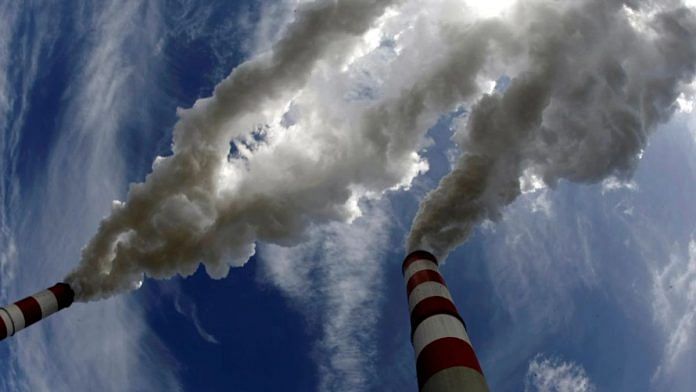New Delhi: With the government greenlighting the establishment of a carbon market, India should create a carbon emissions trading scheme (ETS) similar to what the European Union or South Korea have set up, according to the Delhi-based think tank Council on Energy, Environment and Water (CEEW).
In a policy brief published Monday, the CEEW recommended a cap-and-trade mechanism for greenhouse gas emissions that can be made applicable to various sectors in order to drive down emissions in a cost-effective manner.
The Bureau of Energy Efficiency (BEE), which is in charge of regulating this market, is likely to come up with a framework for a domestic carbon market by the end of next month, according to sources in the central government.
The Energy (Conservation) Amendment Bill, passed in Parliament late last year, paved the way for the establishment of a domestic carbon market in India, which seeks to incentivise emissions reductions among carbon-intensive industries.
According to the CEEW, India’s own carbon market could regulate 50 per cent of its carbon dioxide emissions, while the rest could be mitigated “through dedicated and complementary sectoral policies”.
“An ETS works best in a policy ecosystem that supports a competitive carbon price along with providing incentives for the covered and uncovered sectors to reduce emissions,” the CEEW policy brief said. It added that “complementary policies enable the ETS to function more efficiently by providing enabling infrastructure, market certainty, and incentives for innovation. At the same time, it will reduce the disproportionate and regressive impact of a carbon price”.
A government official who did not wish to be named said “while ETS in countries like EU and Korea set absolute targets on emissions reductions, in India, the emissions targets will not be absolute, but in terms of emissions intensity”. Emissions intensity refers to the volume of carbon per unit of output.
India has pledged to achieve net-zero emissions by 2070, as well as reduce its carbon emissions intensity of gross domestic product (GDP) by 45 per cent by 2030. Carbon markets are viewed as an essential tool by policymakers to achieve these climate goals.
Also read: 1% of global population caused 23% of growth in carbon emissions from 1990-2019, study says
‘Tailored to Indian context’
The Energy (Conservation) Amendment Bill allows the central government or any other authorised agency to grant “carbon credit certificates” — or carbon allowances — to a registered entity, opening the doors to establishing a carbon market.
A carbon market puts a price on carbon and other greenhouse gases emitted in order to discourage fossil fuel use.
In the EU, for example, the carbon market has materialised as a cap-and-trade scheme, wherein a regulatory body issues carbon allowances, each of which is equal to one tonne of carbon or its equivalent. These allowances, which are limited in number, must cover a registered entity’s annual emissions, and can be bought and sold as and when needed. A registered entity that does not have adequate permits may be penalised.
According to the CEEW, it’s important that such a scheme be tailored to the Indian context, where ETS is still a novel concept.
India’s experience with carbon markets in the international arena has been more project-based, under what’s called the Clean Development Mechanism (CDM). The CDM was set up by the Kyoto Protocol, an international agreement in which certain developed countries pledged to reduce greenhouse gas emissions.
In the CDM system, carbon credits were generated by activities or projects that reduce carbon emissions, such as afforestation and renewable energy production. These credits are then bought by emitting entities as a way to “offset” their emissions.
For a domestic ETS scheme, however, the CEEW recommends applying one emissions cap across sectors like thermal power, cement, aluminum, paper and pulp, iron and steel, and textile industries.
“A single cap across sectors enables the inherent cost-efficiency of an ETS to be fully utilised by allowing emissions reductions to take place where they are cheapest across all covered sectors,” the policy brief said.
(Edited by Poulomi Banerjee)
Also read: Why Indian scientists are critiquing IPCC report — unfair burden on developing countries



